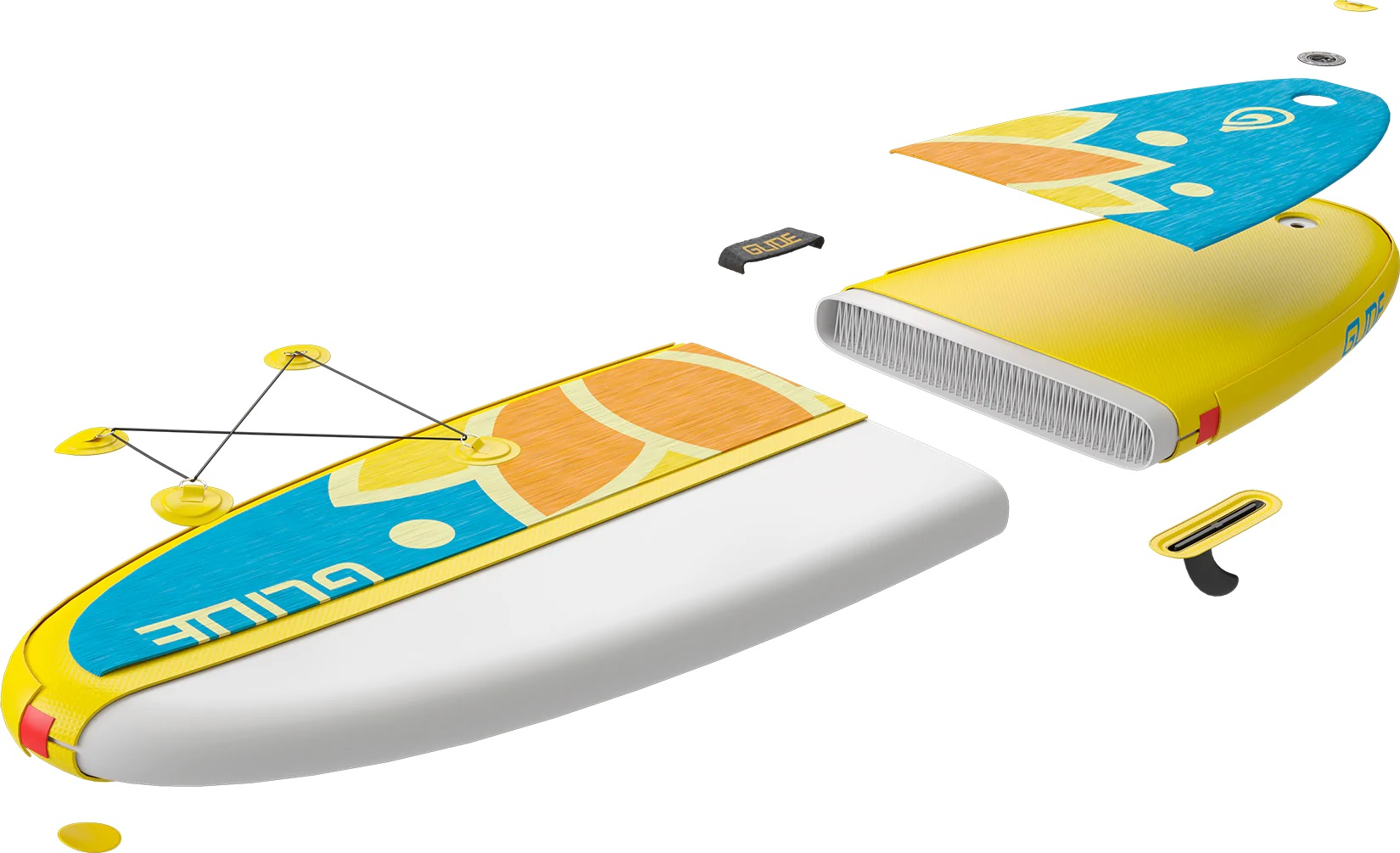Stand Up Paddle Board Yoga (SUP Yoga) is a unique and enriching practice that combines the tranquility of yoga with the dynamic challenge of paddle boarding, offering both physical and mental benefits. Whether you're a seasoned yogi or new to both practices, this comprehensive guide will help you navigate everything from choosing the right equipment to mastering your first poses on water.

Benefits of SUP Yoga
-
Improved Balance and Coordination: Practicing yoga on a paddle board requires you to engage your core and focus deeply to maintain balance, which can greatly enhance your overall stability and coordination.
-
Increased Strength: SUP Yoga engages multiple muscle groups, including the core, arms, legs, and back, providing a full-body workout that builds strength and endurance.
-
Connection with Nature: Performing yoga on the water offers a unique opportunity to connect with the natural environment, enhancing feelings of relaxation and peace.
-
Mental Focus and Concentration: The need to maintain balance on a floating board increases your concentration and mindfulness, which can translate into better focus in everyday life.
-
Challenge and Variety: SUP Yoga introduces a new level of challenge to traditional yoga practices, keeping your routine engaging and exciting.
Choosing the Right Equipment

To get started with SUP Yoga, you'll need a few key pieces of equipment:
-
Paddle Board: Opt for a stable, wide board with high buoyancy to accommodate both you and your movements. Inflatable boards are particularly popular for yoga due to their portability and comfort. Models like the Glide Lotus are designed with yoga enthusiasts in mind, offering a spacious deck and sturdy construction.
-
Paddle: Choose a lightweight, adjustable paddle for easy handling. While you won't use it during your yoga session, it's essential for navigating to your yoga location.
-
Personal Flotation Device (PFD): Safety first! Always have a PFD on your board. Some designs are discreet and won't hinder your movement during poses.
-
Anchor or Leash: To prevent drifting while you're focusing on your poses, use an anchor or attach your board to a fixed point with a leash.
-
Appropriate Apparel: Wear comfortable, quick-drying clothing that allows for full range of motion. Sunglasses, a hat, and sunscreen are also recommended for sun protection.
Finding the Perfect Location
Choosing the right spot is crucial for a successful SUP Yoga session:
- Look for calm, flat waters — lakes, calm bays, and protected inlets are ideal.
- Avoid areas with heavy boat traffic or strong currents.
- Consider accessibility and the presence of a safe, shallow area where you can easily mount or dismount your board.
Getting Started with Basic Poses
Begin with simple poses to get accustomed to the sensation of yoga on a floating surface:
-
Child’s Pose (Balasana): This grounding pose helps you get acclimated to the board’s surface.
-
Downward Dog (Adho Mukha Svanasana): Enhances balance and provides a gentle stretch to your back and legs.
-
Warrior II (Virabhadrasana II): Builds lower body strength and stability.
-
Seated Forward Bend (Paschimottanasana): A calming pose that stretches the back and legs.
Safety Tips
- Always wear a leash connecting you to your board.
- Practice in a safe environment and check weather conditions before heading out.
- Consider taking a buddy with you for added safety and enjoyment.
Conclusion

SUP Yoga is more than just an exercise; it’s a holistic practice that enhances physical fitness, mental clarity, and spiritual rejuvenation. With the right board like the Glide Lotus, which is crafted specifically for stability and comfort, practitioners can enjoy the dual benefits of yoga and paddleboarding for a transformative wellness experience.
Embrace the challenge and tranquility of SUP Yoga — where each pose brings you closer to nature and deepens your yoga practice in ways only the water can offer.






